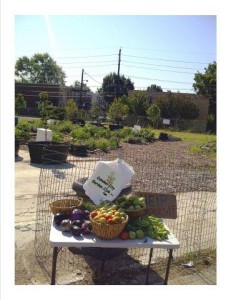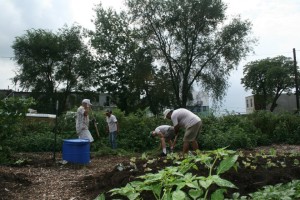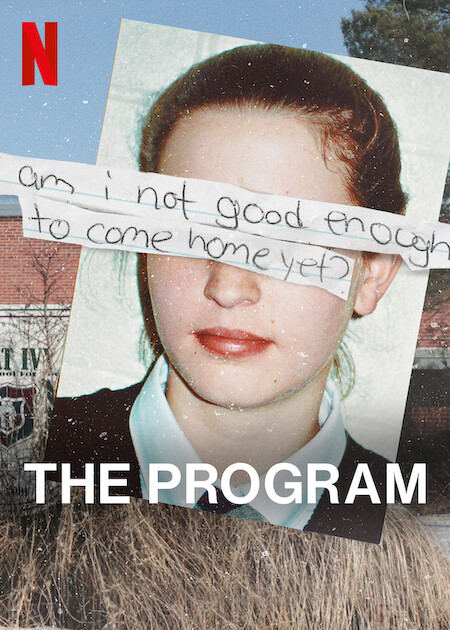Mike Devlin, as usual, is dressed in green—a Children’s Garden sweatshirt unzipped over a weathered plaid button-up. He has a compact frame, with a slight hunch.
“It’s stressful, and it’s a tremendous waste of time,” he says, grimacing.
At the Camden City Children’s Garden, there is hardly time to waste: opened to the public in July of 1999, the 4.5 acre space has served as both an outdoor center for recreation and environmental education geared toward local youth, and the nucleus for the operations of the Camden City Garden Club, which coordinates an expansive network of community gardening operations throughout the city. According to Devlin, founder and director of the Children’s Garden, the Garden transplants over 200,000 productive vegetable plants to 26 acres of urban farmland across the city, also providing seed, organic fertilizer, fencing and, perhaps most importantly, a system of support and advice for the city’s amateur gardening community. Established in 120 of Camden’s 12,000 vacant lots, these volunteer operated gardens are growing more than flowers: a 2011 study by the University of Pennsylvania suggests that the Camden City Garden Club is producing and distributing over two million dollars worth of food each year; the study also shows that that food is serving over 12 percent of Camden’s population.
“We’re dealing with the food crisis in a very large way,” said Devlin, proudly citing the two-page spread celebrating the Club in Michelle Obama’s American Grown.
“Most community gardens, if they’re very good, address one to two percent of the population in a city—they don’t get up to twelve. We’re probably the fastest growing community garden program in America.”
Devlin leads me out the office door, bracing himself for a moment against the bitter wind rolling off the Delaware. After about twenty feet, he approaches the ridged green wall of the building, and points.
“The partition is- somewhere in here,” he says. The wind is unrelenting. We enter the gift-shop, blissfully warm and quiet after only a few minutes in the gale outside. Beyond a reception desk and a rack of stickers and plushes shaped like flowers, sits a sizable open space that Mike informs me is used as a training area for youths and new gardeners to become farmers under a USDA grant. Moving towards the door again, he points to a hand-painted structure the size of a large outhouse: it’s their produce shed, another product of USDA grant money and local labor, complete with an underground cooling space that allows them to put on a farmer’s market outside the colorful steel gates 24 weekends a year.
As we walk back outside, a family of wind chimes hanging above the door quivers and sings in the gale. After walking a few yards over the enormous, gaudy violets emblazoned on the ground of the main plaza, Mike stops. Looking frustrated, almost desperate, he again motions back toward the office.
“They wanna cut up another fence over there, and take it all away,” he says.
…
On January 14, 2012, the State Department of Treasury sent a letter notifying the Children’s Garden that, in order to “enhance the economic development potential” of the waterfront property currently home to the Garden, the CCGC must liquidate their 4.5 acre operation by the end of March, save for the administrative office, two greenhouses, and the three meter path separating it from the nine-car maintenance parking lot. The land would allegedly be occupied by Herschend Family Entertainment, the multi-million dollar amusement park corporation that runs the Adventure Aquarium.
The proposed razing and sale of the Garden is another move in a series of efforts by the State and its partners to further the economic redevelopment of Camden City.

For the first half of the twentieth century, Camden, New Jersey was a vibrant hub of industry and culture, home to RCA Record Company in its prime, the original Campbell’s Soup headquarters and a burgeoning jazz scene—local alumni Walt Whitman often called it “a city invincible”—but all that changed in 1967, when a spell of economic downturn forced the New York Shipbuilding plant to close its doors, spreading mass unemployment and racial tension throughout the city. What followed was a downright exodus into the surrounding suburbs, leaving the remaining population of the city to struggle with unequal opportunity, neglect and exploitation. With the public high school dropout rate hovering around a staggering 60 percent, and the murders per capita rate consistently higher than that of nearly any other American city, Camden, New Jersey is a portrait of American poverty.
Since 1984, city council has partnered with Cooper’s Ferry Development, a private non-profit corporation with a mission to attract private investment and replenish Camden’s tax base through development in real estate, attractions, educational and medical facilities. Until 2000, Cooper’s Ferry handled only the development of the Downtown waterfront, following the model set by those city planners behind the urban renewal programs centered around the Baltimore Harbor—when rebuilding a city, focus on its best resource: the waterfront. In 2001 came the formation of the Greater Camden Partnership, a coalition of public and private sector efforts to revitalize the city; this allowed CFDA to extend its services across the city.
“Our vision is to create Camden as a place where people want to go to live, to work and to play. We try to create the conditions in which private investment will flourish,” said Anthony J. Perno III, CEO of Cooper’s Ferry.
Devlin describes CFDA as an “indispensible co-developer”; along with the Redevelopment Agency and the Garden Club, they helped secure a good deal of funding to the garden going in 1994. In 1999, though, Cooper’s Ferry stepped away from the Garden. The aquarium too, which contributes funds to CFDA, formally cut its ties with the Garden when it came under purchase of Herschend Family Entertainment.

The reduction, the letter from the State Treasury reads, will allow the Garden to “maintain the core benefit [it] makes available to the community ”—but what is the facility’s “core benefit”?
The original City Council resolution, dating back to the project’s inception in 1994, specifies that “the purpose and goal” of the Garden is to “provide education and recreation opportunities for youth and families, as well as provide Open Green Space on the Camden Waterfront… The Children’s Garden project will enhance the beauty of this City, as well as provide a learning experience for its young citizens.”
The State and Cooper’s Ferry submit that the Garden’s greatest value lies in the projects it runs outside the gates of the property.
“They do a number of really good community programs around the city, from vegetable gardening, to distance learning, to an opportunity for students to get some background and job training,” says Perno. He, along with the State, maintains that the Garden will be able to continue all of these programs without the majority of the space they now occupy.
Back in the Garden, Mike Devlin stops abruptly in front of a stout building on the westernmost area of the premises. This potting shed, built as a co-op project by a group of local youth from the Camden Vocational School carpentry program, housing the growth of over 50,000 plants annually during the cold-weather months to be sent out to lot-gardens across town, is one of the buildings to be paved over in the new deal.
“Anthony says I can run this program without these things? I can’t,” he says. “He’s a liar. And you can quote me on that.”
He cites the two most recent grants, one from the Department of Agriculture to operate a mobile farm-stand through the city, and one from the Department of Education sponsoring Grow-Lab activities and free trips to the Garden, neither of which will be able to continue without the space.
“Part of the State wants us to address the food security problem here, but the Treasury want to give it all to Herschend,” says Devlin, but he’s not alone in his outrage: an online petition to stop the eviction process has gained over 1500 signatures, and the Save the Camden Children’s Garden Facebook group is currently pushing 6,500 members. For many of these vocal patrons of the facility, the core value of the Garden goes beyond its distance learning programs.
“The non-dollars-and-cents part is that ten thousand children come here for safe recreation behind fences that’s outdoors,” says Devlin.

“The Camden Children’s Garden is a safe haven for Camden youth and I will do all I can to help it stay that way,” wrote Natalie Caldwell, who grew up in the city, in the Facebook group, “To see all of the children so full of joy and light in their eyes in Camden has to pull on your heart strings, being a Camden resident this means so much, because of the misconception portrayed about Camden and it’s youth.”
“Camden is a violent place, so the Children’s Garden has always been a very safe haven, it’s one of the few places where kids can show up and not worry about running into a hail of bullets,” says Mark Doorley, an ethics professor at Villanova who serves Director of the Center for Environmental Transformation, another non-profit based in South Camden that focuses on urban rejuvenation.
To Doorley, the problem with the Garden’s eviction goes much deeper than the loss of a secure open space: the problem, he says, is a structural flaw in the redevelopment plans of the State and Cooper’s Ferry.
“Regularly, state, regional and local politicians make decisions for Camden that are not really for the people of the Camden—they’re for some industry, some outside entity, it’s never really been for the people of Camden,” he says. “Bottom line is it’s absurd.”
Although the majority of companies that have developed along the Waterfront do so with a waiver of any property tax, Anthony Perno insists that their PILoT (Payments in Lieu of Taxes) far exceed what revenue a traditional property tax would gather annually. The Garden, as a public non-profit on state-owned land, pays no taxes.
“The Aquarium pays 50 cents on every ticket that they sell. Which results in approximately 400,000 dollars for the city last year as a free payment. Approximately. Give or take,” said Perno.
Doorley applauds the effort to refurbish the Waterfront, but maintains that the economic benefits of hosting these industries in reality do not make it back to the citizens themselves.
“They have this idea that this is going to work if we keep bringing in Ed’s and Med’s and we keep giving away tax waivers to entertainment industries and manufacturing industries, that somehow there’s going to be this magic wand and there’s going to be this race to gentrify Camden,” says the professor with a derisive laugh, “But it hasn’t worked. There’s a definition of insanity—trying the same thing over and over again and expecting a different result. It’s just insane.”
Doorely says that the people of each neighborhood of Camden need to realize their own capacity to start businesses that can grow upwards. He cites the possibility for a budding organic flower rub business down the street in Waterfront South.
“You begin to strengthen communities by slowly but surely building these kinds of initiatives that the people feel ownership for. Then support them in identifying ways that they can create their own economies, where they can get their needs met through their own labor,” says Doorley. “You don’t need some big corporation to set down here and parcel, to give out its little bobbles to everybody around. You can help people to build entrepreneurial ideas—you can’t buy that, you have to work for it.”
He sees the Children’s Garden as a key piece in this citywide bottom-up economic mechanism, but he’s not the only one: another particularly vocal supporter of the Garden’s preservation has been Representative Rob Andrews.
“I refuse to accept the impending doom of the Children’s Garden,” said the congressman.
Andrews says he has sent a clear message directly to Governor Christie’s office.
“The Garden is more than just a tourist attraction, it’s a special place for the children of the region to feel some sense of peace and serenity. It represents not just a place, but a community of people who are dedicated to its success and have volunteered and feel a real personal investment,” said Andrews.
Though investing in corporate waterfront attractions is good for attracting foot traffic, he says, they’re not sufficient to grow the kind of jobs that we need.
“Camden needs a vibrant middle class. What I mean is that we need the people who already live there to get an education and raise their earning potential and earnings level and stay there,” he explains, “If Camden had 5,000 more middle class families, it would have a supermarket, a movie theatre, shopping, doctor’s offices, dentist offices—it would have the kind of middle class infrastructure that provokes jobs and tax ratables and public services.”
Andrews, unlike many defenders of the facility, also advocates for an extension of the Aquarium; he says there is ample waterfront property that could sustain a larger aquarium without threatening the permanent health of the Garden. The online petition and Devlin himself both point out the 2.6 acre expanse of unadorned grass that sits in front of the aquarium as a finely viable place for expansion. Though neither Herschend nor Cooper’s Ferry has announced any formal plans for what this new waterfront attraction might be, rumors abound with murmurs of everything from a food court to a dolphin tank.
…
Back in his cluttered office, Mike Devlin traces his index finger around the perimeter of the property indicated on the aerial map of the waterfront attached to the State’s letter.
“You’ve got a population of 76,000 people or so: those people are suffering from hunger, malnutrition and obesity—obesity because they only have acess to food that’s not good for them,” he says, “We’re not providing Twinkies for people: we’re growing tomatoes and other vegetables, we’re showing them how to cook it, prepare it, store it, preserve it. We have nutrition education. These things are needed: we have one of the worst places in America for nutrition—it’s a real crisis. Violence is a real crisis; we’re trying to address that with a safe haven that’s outdoors.”
“Between the State and Cooper’s Ferry joining in on this conversation, and Herschend—they think we have an entertainment crisis here,” he continues, rubbing his forehead, “So we need to laugh more. That’s good. But do we have to take away a place that’s helping people eat?”
As he too browses a mental list of all the potential attractions to replace the Children’s Garden that he’s heard floating around Waterfront South, Mark Doorley shakes his head with a defeated looking grimace. Then he laughs, loudly.
“The people are never asked.”
…






